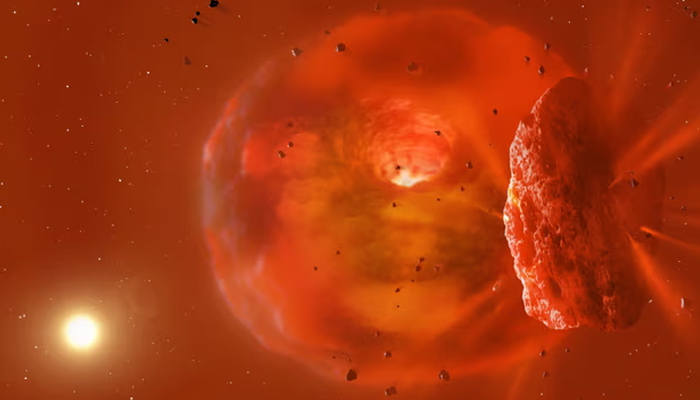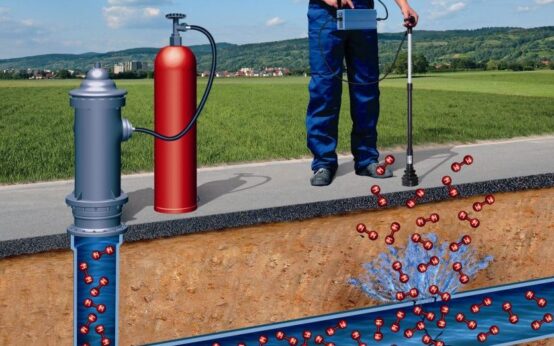[ad_1]

Researchers have found in their new study a successful sight of a collision between two icy giants — as large as Neptune — for the first time ever, sparking enormous amount of debris and radiation.
As the collision occurred, scientists found that a spinning object was formed — regarded hundred times larger than our Earth, according to the study published in the journal Nature.
Matthew Kenworthy, a co-author of the study at the Leiden Observatory in the Netherlands, Dr said: “It would be very spectacular. The energy of the collision would turn the remnant into something resembling a star, fainter than the main star in the system but about seven times larger in size, visible all through the rest of the stellar system.”
It was revealed after an astronomer replied to a post from Dr Kenworthy about a star known as ASASSN-21qj.
Dr Kenworthy was observing for the casting shadows of the giant rings around the planets that occur when they face their parent star.
ASASSN-21qj — located at a distance of 1,800 light years from Earth — sparked his interest because in December 2021 its light went bleak.
A citizen scientist at Nasa, Arttu Sainio looked the past studies of the star by the US Space Agency’s Neowise mission, an infrared space telescope.
The volunteer scientist found that 900 days before the star dimmed, Neowise saw a steady and sustained brightening of infrared light from the same location.
“I was looking for something completely different,” Kenworthy said, adding that, “the infrared brightening told us something unusual had happened in the neighbourhood of this star, and so it took us down this new path.”
The astronomers concluded after running the analysis: “The blast of infrared radiation came from a hot new object or synestia created by the collision of two planets nearly as large as Neptune.”
Infrared readings also suggested them that the vast spinning object had a temperature of more than 700C for about three years, which will cool down and form a new planet around the star.
The star started to go dim about 2.5 years after the afterglow began as a massive cloud of fine impact debris drifted across the face of the star, the findings suggest.
“It’s the first time we’ve seen the afterglow from such an event,” said Simon Lock, another co-lead author at the University of Bristol, adding that “we’ve seen debris and discs before, but we have never seen the afterglow of the planetary body that’s produced.”
The experts are now looking for follow-up studies to gain further insight.
Dr Kenworthy said: “If the dust cloud continues to orbit the star, then in about five to 10 years the cloud will have moved to one side of the star and astronomers should see the star’s light reflected from the dust with the largest ground-based telescopes.”
[ad_2]
Source link

 Best Underground Water Leak Detection Equipment 2024
Best Underground Water Leak Detection Equipment 2024  Best Backyard Ideas: Turn Your Outdoor Area Into a Creative and Calm Haven
Best Backyard Ideas: Turn Your Outdoor Area Into a Creative and Calm Haven  Babar, Rizwan are good players but not whole team, says Mohammad Hafeez
Babar, Rizwan are good players but not whole team, says Mohammad Hafeez  Pak vs NZ: Green Shirts aim to bounce back against Kiwis today
Pak vs NZ: Green Shirts aim to bounce back against Kiwis today